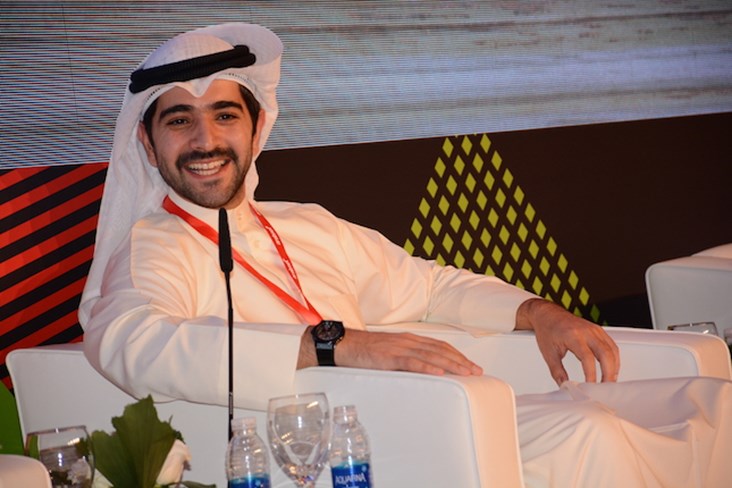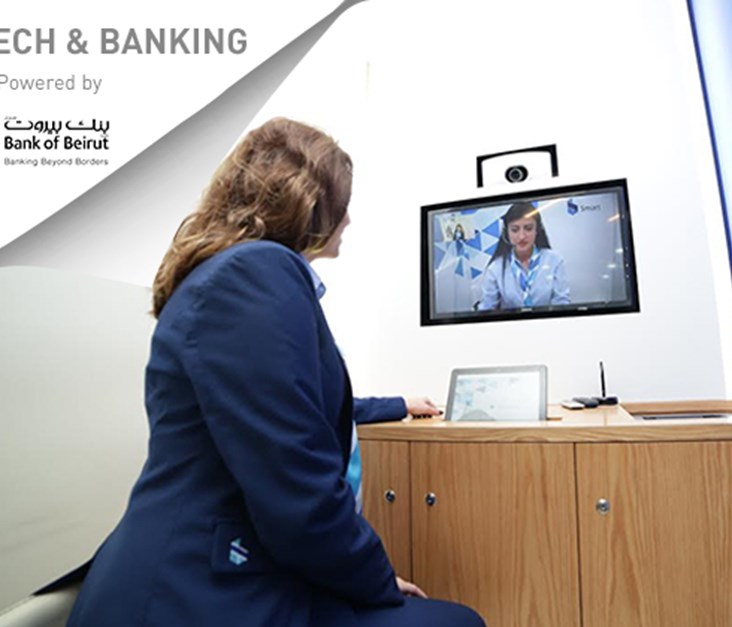
Carriage is a food-delivery service in Kuwait that offers delivery from registered restaurants, many of which don’t usually deliver, with live tracking of orders. Abdullah Al-Mutawa, owner of The Stack restaurant and Founder of Carriage, came up with the business model after he wanted to start offering a delivery service for his restaurant and realized how hassling and expensive it would be to set up.
Earlier this year, online food takeaway firm Delivery Hero, which sources have said is considering a flotation imminently, acquired Carriage for a disclosed amount of $100 million. This is the highest IRR in the region to date. Carriage had received a seed capital fund of $1.3 million in January 2016 to kick-start the project, and Kuwaiti investors increased the funding again last May.
Delivery Hero operates in 53 countries internationally in Europe, Asia, Latin America and the Middle East and partners with over 300,000 restaurants. What's interesting to note is that Rocket Internet has invested $613 million in Delivery Hero, and Rocket Internet acquired Carriage's main competitor, Talabat.com, in February 2015 for roughly $170 million.
During ArabNet Kuwait 2017, I sat down with Abdullah Al Mutawa, Co-Founder and CEO of Carriage to discuss Carriage’s journey, its acquisition, and upcoming plans.
Where did the idea of Carriage come from? What gap did you want to fill?
Carriage first started when I had a restaurant. Once I opened the restaurant, I realized that the delivery arm is quite critical. The easy decision at the time was to join the existing platform market that was there, which was Talabat.
We sat down with one of the owners of Talabat at that time, and my question to him was where could we get the logistics support for the delivery aspect. His response was that they are purely a marketplace, that they divert the order from the customer to the restaurant, and that the restaurant takes care of the delivery. That’s when the idea just clicked. I felt there was a gap in the market.
It’s a pain point when you’re talking about labor-intensive endeavors, and having drivers and vehicles and maintenance towards that, it's a huge capital-intensive endeavor. I wasn’t aware that the business model exists worldwide until we conducted some research and we learnt that the business model does exist and has been proven successful, yet that it has not been implemented in the region. So we got the idea, and myself and the remaining co-founders Musab Al Mutawa, Khaled Al Qabandi, and Jonathan Lau, and went full steam ahead to develop and operate the idea.
Why do you think Carriage has become such a success?

We were just at the right place at the right time and we managed to pay attention to every single detail related to the service that we’re providing down to even the sentence said to the customer.
Little tweaks we did in our services helped gain traction and customers. We also innovated within the space, managed to see what the customers’ and restaurants’ pain points were and capitalized and built on that down to the t. For example, one of the biggest issues customers had was when they ordered, the time of delivery was not defined, however, at Carriage, we provide full transparency of the order process from the dispatch, down to it being prepared, down to it being collected by the driver, and then delivered and live tracked.
Carriage introduced the live tracking feature in the food sector in Kuwait specifically and in the GCC. We managed to innovate within the space and that’s actually what made us gain amazing traction and customers right off the bat.
What challenges did you face?
There were a lot of challenges, which included acquiring talent. One of the biggest challenges we faced was getting the right talent and getting them in the right position and place. Talent is non-existent in the tech sector here, especially when it comes to new languages in terms of coding. The tech infrastructure has been stagnant for quite some time and we haven’t seen a lot of innovation in that sense, however, we managed to overcome this challenge.
Another challenge was raising our seed round in order to go full speed ahead. For us, its ‘the winner takes it all’, and we did not want to hold back in any sense. The idea of raising a seed round was especially new to investors – we managed to raise seed funding before becoming operational and we managed to have people who were interested in the idea and wanted to invest.
These are some of the challenges we faced pre-operations. Post-operations it was just managing the level of service we were promising the restaurants. Maintaining our level of service while scaling was also another challenge that we managed to overcome
I would imagine customer acquisition would have also been a challenge since when you launched, Talabat had been in the market for 13 years prior to your launch and had a large customer base. Was customer acquisition and signing up restaurants a challenge for Carriage?

A lot of people perceive restaurants that deliver as low-end restaurants. We managed to change that mentality by initially attracting high-caliber restaurants that never delivered before.
We managed to get restaurants where the dine-in wait times were between half an hour and an hour. By selecting the right restaurants, along with the features Carriage provided, we created a buzz. Moreover, we educated the restaurants that delivery does not have to be for only low-end restaurants, but that it’s also a revenue stream that should be tapped into, and we managed to prove that to them. The initial 18 restaurants that we launched with are what attracted the rest of the restaurants and are also what acquired the customers.
One of the challenges many startups face is scaling to other markets especially when it comes to dealing with bureaucracy. Carriage has managed to expand to 4 markets during the past 17 months. What was the process/difficulty in expanding to those new markets?

We are in 4 markets at the moment, and in a few weeks we will be in our 5th market – Saudi Arabia.
Each market has its own set of challenges but we were very focused and keen on getting local talent in each market. I think that was the most important aspect.
Although the GCC is our backyard, each market has its own way of operating and its own ins and outs, so one of the most important things we had to do was hire a local GM to hire a local team so that we could overcome the learning curve
In terms of bureaucracy, bureaucracy exists everywhere, it’s just there, and you just have to understand and figure out how to expedite the process, but I’m keen on emphasizing that local talent was our savior in each country.
Have you noticed a difference in customer behavior in every market you’re in? And has that been a challenge?
Consumer behavior is more or less similar since at the end of the day it’s food and people want to eat. What differs is the purchasing power in each market, and each market has its challenges, for instance in some markets they don’t use addresses like we would in Kuwait, rather they use locations and pinpoint locations. Therefore, in terms of consumer behavior itself it’s quite similar, but in terms of purchasing power, operations, these were things we needed to learn and overcome.
In regards to acquisition, I’m aware that due to a NDA, there’s quite a lot of details you cannot share with us, but what can you disclose to us, what does it mean for Carriage, and how does it affect Carriage today?

Let me start off by saying, it was a long and tedious process. What is disclosed is the cash component of the deal, which is $100 million, however, things that are related to post cash upfront, are things that cannot be disclosed. It was a very interesting process for us, and we positioned ourselves to be an attractive acquisition target.
We were trying to find innovative ways to ‘annoy’ the existing player in the market. You have to be aggressive. The nice thing is that initially you’re a very small team, you’re very nimble, you want to pivot a lot, and you want to make sure that you’re doing the right thing. The way we started it’s not the same way we were 3 months, 6 months, or a year after we started operating.
You need to pivot, and you need to adjust according to feedback and according to the market. So it was quite an interesting journey for us but one of the other things that I think triggered or helped position us as an attractive endeavor was innovating within the space that the existing player had, and one of the things we did that was very critical for consumers was live tracking. It also was a sales game while we were trying to attract restaurants from the existing player. All of these things positioned us to be attractive for an acquisition.
Is there anything that’s going to change at Carriage due to the acquisition?
Yes, but to the better of course! It was essential for us to retain management even though we sold 100% of our shares. From the founders’ team and the whole team at Carriage, I feel like each and every one of us feels like they are a critical part of the company. All of our names are attached to it, we wanted to make sure that we don’t just let go of the company easily, we wanted to ensure that we maintain our promises and expand on our promises and expand regionally.
Why after just 15 months of operations, would Delivery Hero come in and acquire Carriage for such a large sum? Especially since you weren’t seeking an exit at this stage?

Any ecommerce platform that is out there has the end goal to either IPO or exit. I honestly did not expect it this soon. The acquisition came at a time when were going after our series A round, and we had just launched our first regional market, which was Bahrain.
We were going after our series A round to expand both locally and regionally so we started going into these negotiations when we started talking to investors, and they saw that the numbers made sense, our cohorts were amazing and it was just very attractive to them and added value to their existing markets.
When you talk about the MENA region specifically related to food, you’re talking about one of the biggest markets worldwide, not just regionally. MENA is a very attractive market, not just for Delivery Hero, but for any food related companies or endeavors.
You’ve also recently added another service, which is flower delivery. May you share more about this service, and are you planning on adding more vertical services? Will this only be offered in Kuwait or in all your existing markets?

Kuwait is an experimental country for us. We’re from here so we truly understand the market.
The reason we first launched our new vertical, which is flowers, is because we are an ‘urban on-demand logistics company’ and what that means is that generally speaking, whenever you order anything online, it usually takes between 2 to 4 days to deliver, so there are a couple of points to consider:
1) What we’re trying to go for is not a million SKUs; we’re going after speed rather than quantity.
2) We’re bridging the gap between online and offline. There are multiple existing retail shops, flower related, food related, etc. that would love to be part of an online platform that already has network effects and has a customer database.
3) We wanted to fill the gap of not having to wait for your deliveries. When talking about flowers for example, you’re talking about certain hours when you receive your delivery, meanwhile with us it’s on-demand, you get it in an hour, if not less – at the moment we’re averaging 42 minutes for food deliveries which we will hopefully also be lowering.
People care about speed and when they want to order something, they want to receive it immediately, and this is one of the reasons why we introduced it. Another thing is that the infrastructure already exists, our logistics infrastructure exists, our tech infrastructure exists, and we just want to go full on in terms of innovating within every space that wants to deliver.
Essentially what we want to do is be a one-stop shop for anything and everything that can be delivered.

This basically means you will be introducing more services and competing with additional players in the market. First it was Talabat, today it’s Bleems, if you were to add laundry you’d compete with JustClean, etc. How do you plan on tackling the competition in all those spaces?

It’s all about the services you provide. I believe what we provide in terms of quality of service and tech solutions, is not provided by anyone else. No one delivers within the hour, no one delivers in less than 45 minutes, and this is something we’re going full on with.
I also believe that competition is healthy, competition is healthy for us, as in Carriage, and for other players in the market, and it just keeps every single company innovating within the space they are in.
What advice would you give to up and coming startups and aspiring entrepreneurs?

We are in a region of opportunities. They are so many opportunities that have not been tapped into and specifically in the tech sector, everything is trying to be developed with a tech solution globally, and I think we’re an underdeveloped in terms in tech solutions, whether it’s in health, or entertainment, or any sector. There’s also room to innovate.
What I always like to say is innovate but don’t replicate what already is existent in the current market.
Latest Business
Intelligence Report














